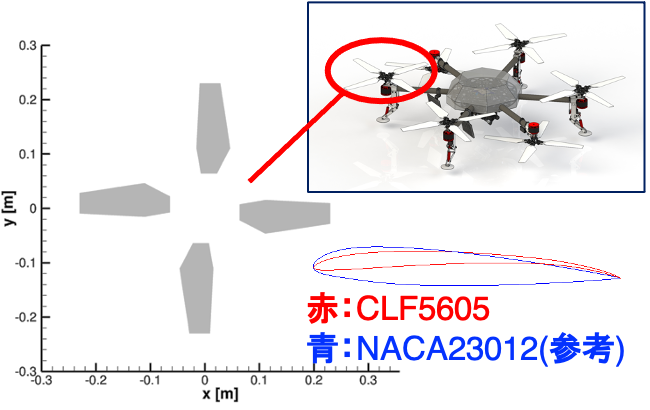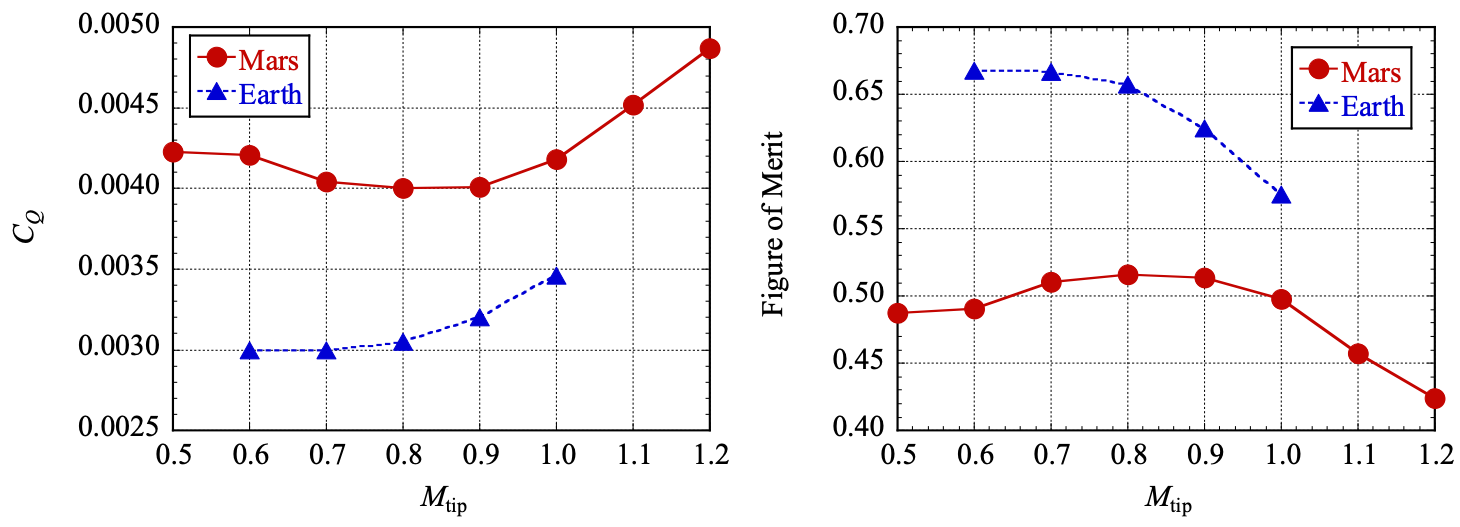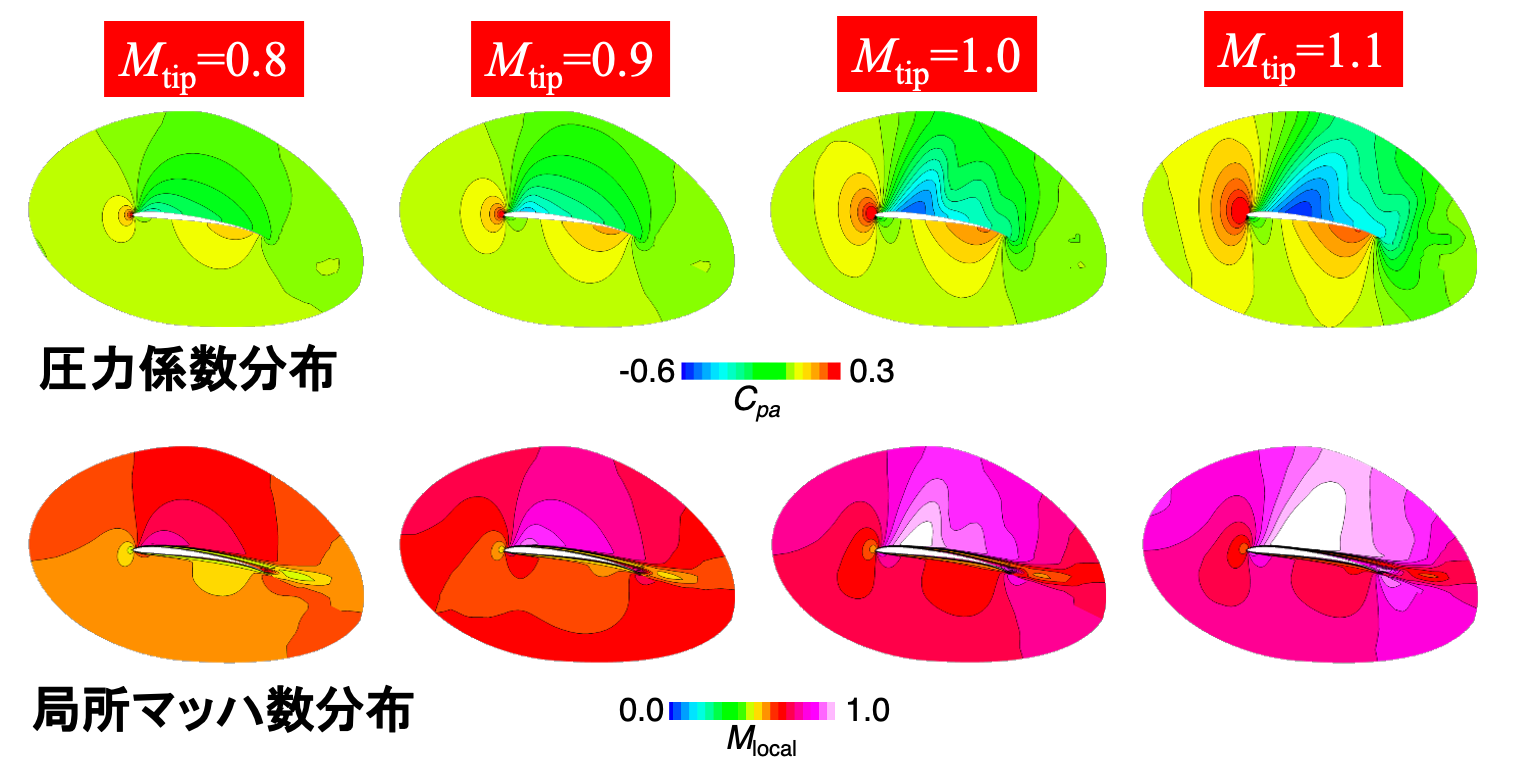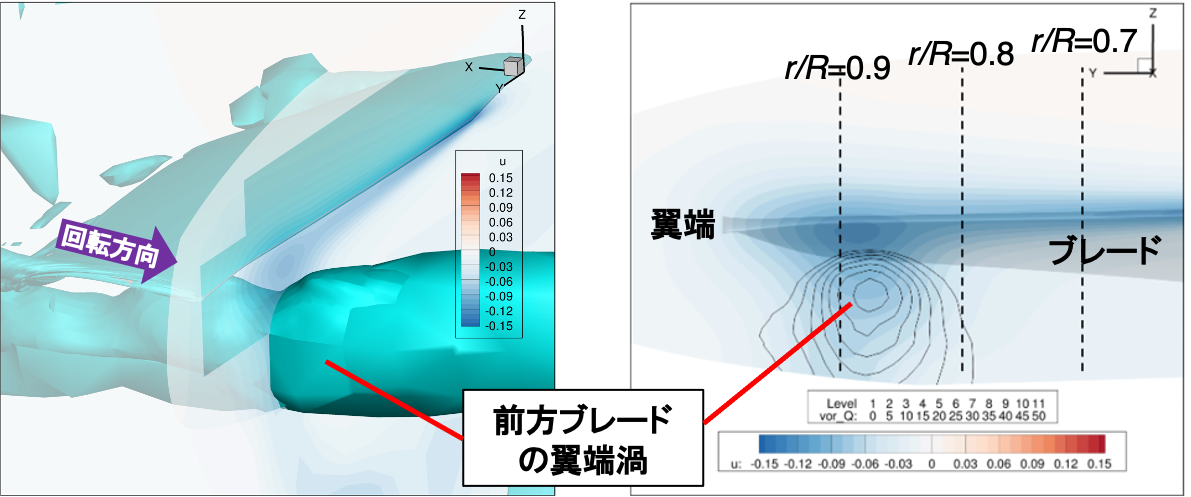Numerical Study on Rotor Performance of Mars Helicopter
JAXA Supercomputer System Annual Report February 2021-January 2022
Report Number: R21EACA41
Subject Category: JSS Inter-University Research
- Responsible Representative: Makoto Sato, Associate Professor, Kogakuin University
- Contact Information: Makoto Sato, Kogakuin University(msato@cc.kogakuin.ac.jp)
- Members: Makoto Sato
Abstract
Mars helicopter project is now going. Since the atomospheric density on Mars is about 1/100, the sound of speed is about 3/4 compared with those on Earth, we need to develop the high perfmance heli-rotar. In JAXA, the experimental measurements of the heli-rotar performance at low-Reynolds number condition have been conducted. In the present research, we conduct numerical simulations on the Mars heli-rotor in order to clarify the characteristics of the flow field.
Reference URL
N/A
Reasons and benefits of using JAXA Supercomputer System
We need to conduct the large-scale simulations on the rotational wing flow using "rFlow3D", which has been developed in JAXA.
Achievements of the Year
We have conducted the numerical simulations on rotors of Mars Helicopter"HAMILTON"[1]. The computational parameter is the Mach number at the wing-tip (Mtip). Here, the pitch angle is set to be the constant Ct(thrust coefficient) for all Mtip cases by the trim analysis. The flow solver is rFlow3D, which has been developed at JAXA.
The computational object is the flow around the single rotor of "HAMILTON". Figure 1 shows blade configurations. The airfoil shape is CLF5605, which is used for the Ingenuity. It is noted that the blade and airfoil shape here are only base shapes, and the development for the improved blade configurations is now going.
Figure 2 shows the effects of the Mtip on Cq (torque coefficient) and Figure of Merit. Here, the results of the Earth condition are also shown in Fig. 2. For the cases with the Mars condition, Cq becomes lower at Mtip=0.8-0.9, resulting in the higher Figure of Merit. In especial, the maximum Figure of Merit is achieved at Mtip=0.8-0.9. On the other hand, for the cases with the Earth condition, Figure of Merit decreases at Mtip>=0.8.
Figure 3 shows the averaged flow fields at r/R=0.9 cross section. The upper figure shows the pressure coefficients based on the sound speed (Cpa), the lower one shows the local Mach number. From the cross sectional distributions, a shock wave is not observed for the cases with Mtip=0.8, 0.9. On the other hand, shock waves can be observed for the cases with Mtip=1.0, 1.1.
Figure 4 shows effects of the wing-tip vortex for the case of Mtip=0.9. It can be observed that the wing-tip vortex induces the flow in the -x direction (rotational direction). Therefore, the local Mach number on the blade is decreased through the induced flow of the wing-tip vortex formed by the forward blades, resulting in the suppression of the shock wave.
[1]Masahiko Sugiura, Yasutada Tanabe, Hideaki Sugawara, Keita Kimura, Kuniyuki Takekawa, Akira Oyama, Makoto Sato, Masahiro Kanazaki and Yuki Kishi,"Aerodynamic Optimal Design of Mars Helicopter Rotor Blade Planform", ANSS2020 (2020).
[2]Koning, W. J. F., Johnson, W., and Grip, H. F., "Improved Mars Helicopter Aerodynamic Rotor Model for Comprehensive Analyses", AIAA J., Vol. 57, pp. 3969-3979 (2019).
Publications
N/A
Usage of JSS
Computational Information
- Process Parallelization Methods: N/A
- Thread Parallelization Methods: OpenMP
- Number of Processes: 1
- Elapsed Time per Case: 192 Hour(s)
JSS3 Resources Used
Fraction of Usage in Total Resources*1(%): 0.01
Details
Please refer to System Configuration of JSS3 for the system configuration and major specifications of JSS3.
| System Name | CPU Resources Used(Core x Hours) | Fraction of Usage*2(%) |
|---|---|---|
| TOKI-SORA | 150797.52 | 0.01 |
| TOKI-ST | 0.00 | 0.00 |
| TOKI-GP | 0.00 | 0.00 |
| TOKI-XM | 0.00 | 0.00 |
| TOKI-LM | 0.00 | 0.00 |
| TOKI-TST | 0.00 | 0.00 |
| TOKI-TGP | 0.00 | 0.00 |
| TOKI-TLM | 0.00 | 0.00 |
| File System Name | Storage Assigned(GiB) | Fraction of Usage*2(%) |
|---|---|---|
| /home | 10.00 | 0.01 |
| /data and /data2 | 20480.00 | 0.22 |
| /ssd | 100.00 | 0.03 |
| Archiver Name | Storage Used(TiB) | Fraction of Usage*2(%) |
|---|---|---|
| J-SPACE | 0.00 | 0.00 |
*1: Fraction of Usage in Total Resources: Weighted average of three resource types (Computing, File System, and Archiver).
*2: Fraction of Usage:Percentage of usage relative to each resource used in one year.
ISV Software Licenses Used
| ISV Software Licenses Used(Hours) | Fraction of Usage*2(%) | |
|---|---|---|
| ISV Software Licenses(Total) | 0.00 | 0.00 |
*2: Fraction of Usage:Percentage of usage relative to each resource used in one year.
JAXA Supercomputer System Annual Report February 2021-January 2022






